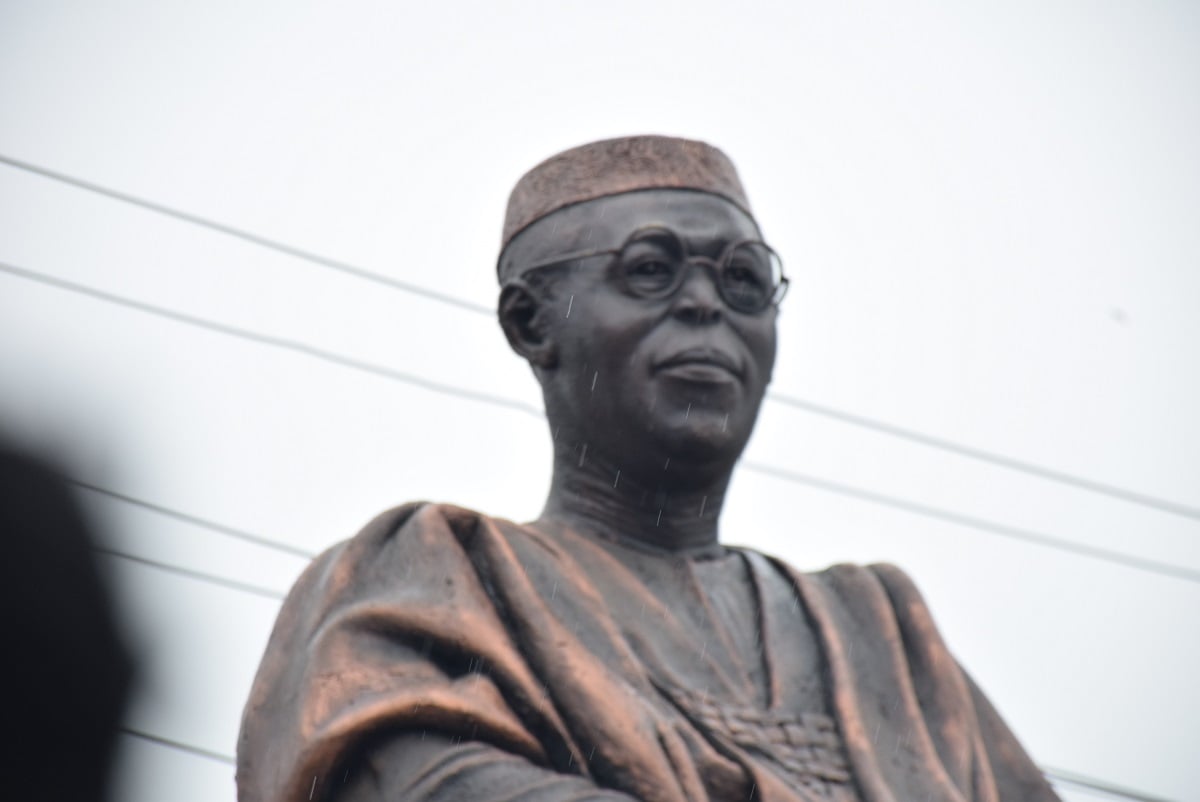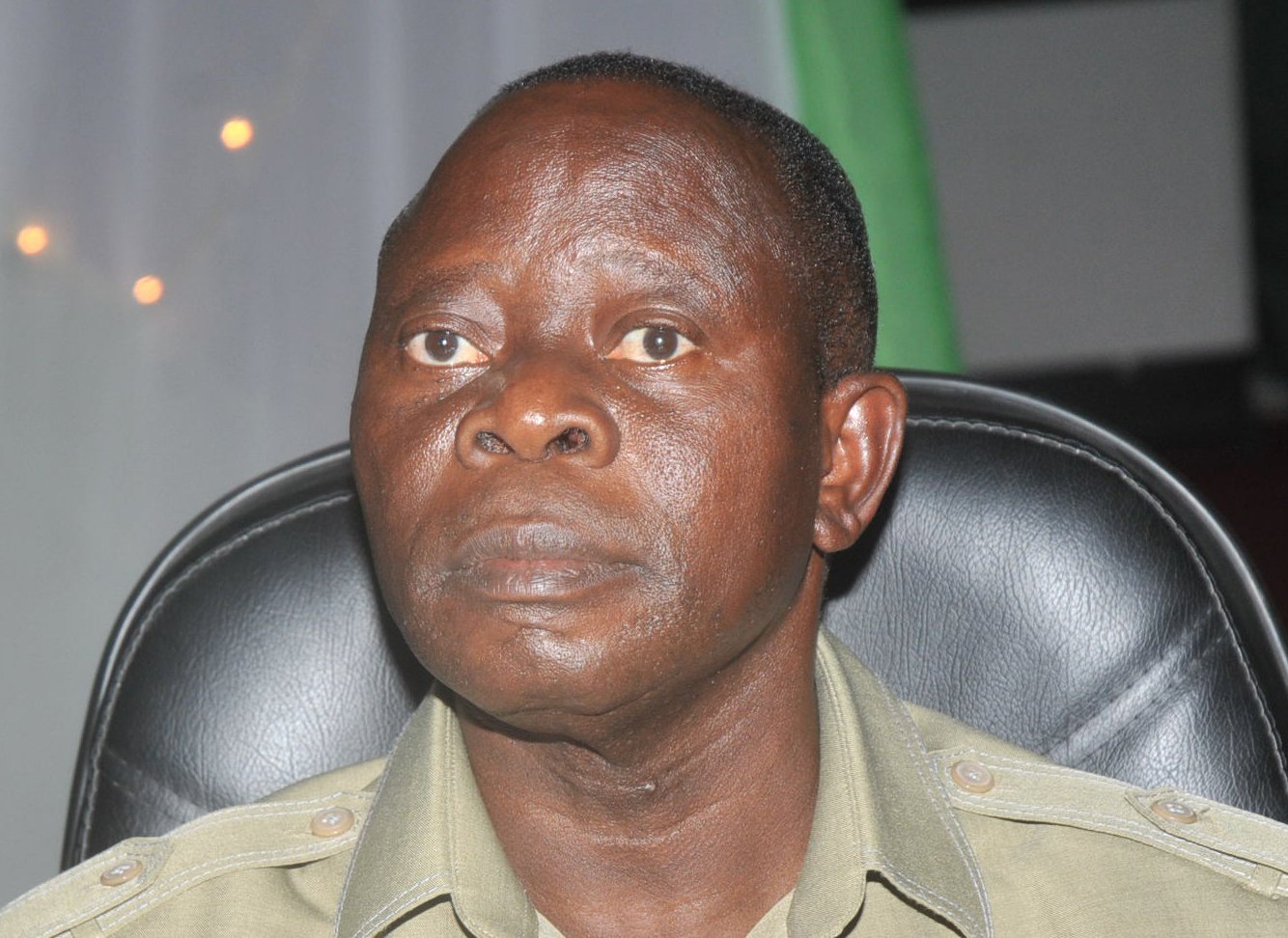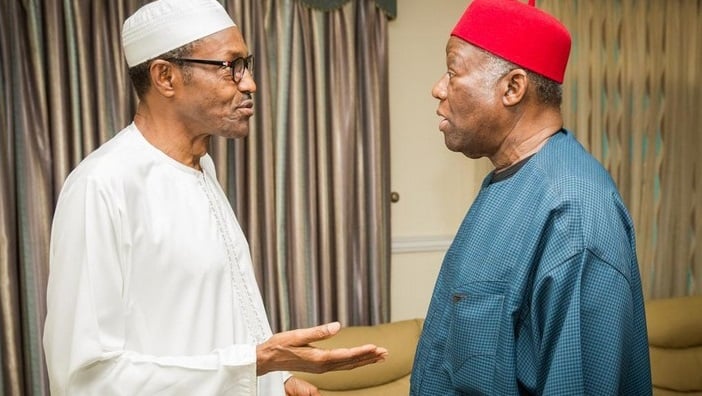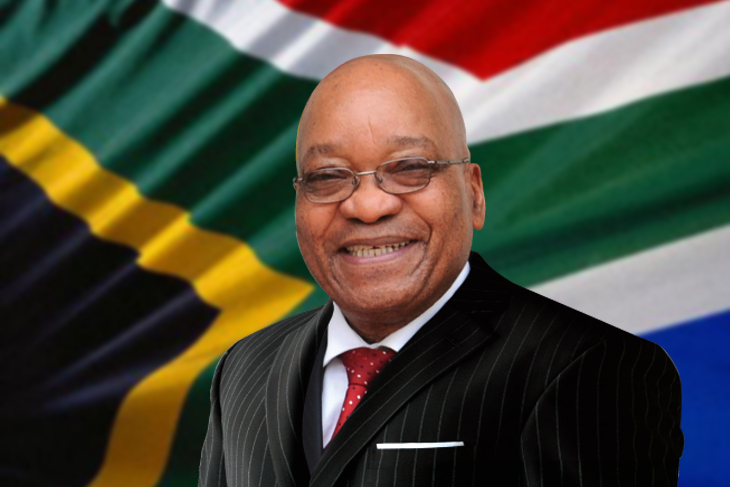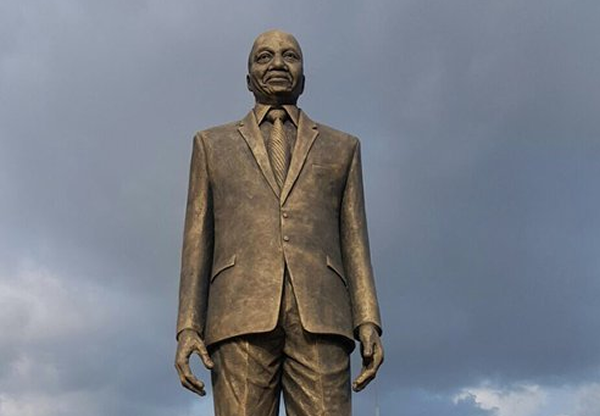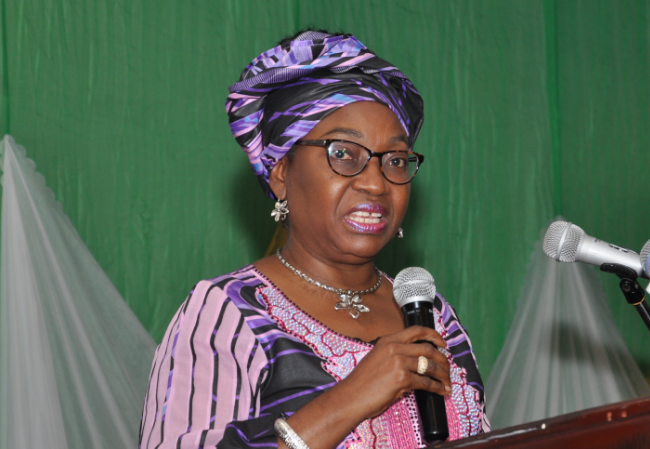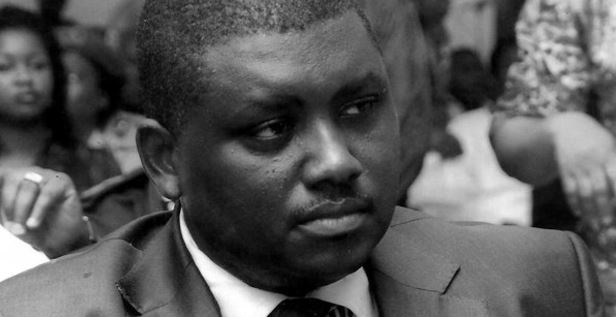Let it be on record that the Governor of Lagos State, Akinwunmi Ambode, deserves kudos for the concerted efforts at changing the environment and landscape through public art pieces, murals, sculptures and radical redesign of under the bridges, etc.
It is in such beautification on the one hand and an acknowledgement of the seminal role of the late sage, Chief Jeremiah Obafemi Awolowo that the statue dedicated in honor of the visionary leader that this probably belongs.
But for what purpose was Awolowo’s statue made? Was it to edify or was it a memorial? Or to commemorate heroism? Does it represent a strong sense of Awo or was it merely a stereotype? Is it a realistic rendering of Awo or is it idealized? Does it command presence and elicit awe? What does Awo pose imply? Ordinary! Energetic! Legendary! Historical! Authority! Can we classify it alongside the Abraham Lincoln statue at the Lincoln Memorial, or the Thomas Jefferson statue at the Jefferson Memorial, or the Martin Luther King, Jr. statue in Washington, D.C.
According to Auguste Rodin, one of the masters; “The body always expresses the spirit for which it is the shell?” Are certain bodily features of forms distorted to make a statement? Are the clothing, ornaments and accoutrements used to enhance or diminish Awo? Does the sitting Awo provide aesthetic harmony? What does the medium and the techniques of Awo’s shape contribute? For example, what if Daniel Chester French’s marble statue of Lincoln was done in stainless steel? Why was it in a sitting position? What are the associations of Awo’s materials? While there is nothing inherently bad about sitting statues – indeed our very own master artist, the late Ben Enwonwu created a masterpiece of Queen Elizabeth II of England while Michelangelo did with the Bruges Madonna. So, why did the Awo sculptural piece failed to make the cut? Could it be because the sculpture was ‘clumsy’ and did not emphasize the essential Awo?
Advertisement
What is Awo’s statue made of? According to the ‘artist,’ the sculpture was rendered in steel skeleton and polystyrene of various densities and painted in bronze. But some academics suggest that it could have been done in iron (of stainless steel, which suggests heavy industry) or with bronze or marble (which suggest nobility). Why is it that we don’t have Awo in any of these but only in fiber glass?
When the Awo statue was in the making, was there a sketch showing the different angles and were small scale, three-dimensional models, either of clay, wax or plaster ever made for clients to critique so as to have an understanding of what the final product would look like?
According to Hamza Atta, the executor, the concept of creating monumental and cultural art in urban spaces is to inspire “our youth to greatness.” If this poor rendition is the best he could do, then we are all doomed to perdition with an obnoxious and vexatious assault on our urban- public spaces. The Awo statue as interpreted by Atta is neither monumental nor of any historical and cultural values.
Advertisement
This takes us to the process of commissioning a work of art. Who gave the approval for the Awo statue? And if the argument was to provide opportunities for our youths, then they could’ve easily bought the Boeing Dreamliner 787 and in giving our youths the opportunity handed the jet to a rookie graduate from the flying college in Zaria.
Given the very talented creative arts departments in our higher institutions, especially at the School of Arts and Design at Yaba College of Technology and the Center for Creative arts of the University of Lagos, one is tempted to conclude that the state government “rushed” the Awo statue without doing the needful. Lagos is the Center of Excellence and is blessed with master artists, both at home and in the diaspora: Yusuf Grillo, Bruce Onabrakpeya, Kolade Oshinowo, David Dale, Dele Jegede, Olu Amoda, Sola Ogunfuwa, Akin Lipede, Kunle Adeyemi and many others. These master artists needed to be involved in the design and execution of memorials in Lagos. What will not endure is the proliferation of crafts on our streets and parks.
Without denigrating our hardworking craftsmen, it is beyond their scope. Besides, no serious artist worth his name would design, execute and deliver a monument in honor of Awolowo in less than eight months. It took eight years to finish the Lincoln Memorial in honor of the 16th President of the United States. As the saying goes, it is just round leather on anybody’s leg, but with Pele, it is the World Cup.
There is no point in comparing Awo statue with that of Abraham Lincoln, either from the cultural, aesthetical or historical backgrounds. While Lincoln Memorial has columns, the colonnade, the cornice of carved scroll with lions’ heads, the attic frieze, the ribbons and palm leaves, bronze girders, marble, the inscriptions, murals, etc. to depict a contemplative Lincoln, Awo statue has nothing.
Advertisement
Can the Awo statue be pulled down and re-commissioned? Of course it should so as to bequeath a timeless memorial to generations yet unborn. The new Awo could be carved from a block of marble through the subtraction and modeling of the sage to release the quintessential Awo as we knew him. Michelangelo’s David was carved in marble while Rodin’s Walking Man was modeled in clay and then cast in bronze. For the new Awo statue, the base upon which it will stand should be expressive and functional; the sculpture which when seen from multiple angles will present a coherent whole and not merely a single frontal view. Pedestals are important parts of sculptures since they mediate between the actual site and the representational signs. What appears eclectic from one point of view can be logical from another.
As the year winds down and the frenzy of Lagos at 50 is also slowing down, it is time to take stock of the commemorative murals, installations, artworks, etc. in all parts of Lagos. We are of the opinion that the sculptures at the Maryland Interchange are problematic since the pedestals are much more commanding than the actual sculptures, show no clarity, and create undue tension at an already bad junction. Motorists are wary of the predatory law enforcers at the Maryland Interchange and would have little time for aesthetics. The boat series opposite Ayinke House of the General Hospital in Ikeja diminishes the Sir Mobolaji Bank Anthony statue at the same venue. The boat installation at the Ile Zik-Airport Axis has no harmony with that particular environment, exaggerates and stylistically is neither here nor there.
We need people with a sense of history and cultural grounding to interpret commissions for Lagos. Michelangelo had an athletic David without the attributes of the sword, the helmet and the decapitated head of Goliath, yet David remains the embodiment of youthful strength and self-confidence. We can still have the Awo statue without losing the sage a second time as “the President Nigeria never had.”
Maybe a new study with trained artists, critics, historians, ethnographers and real “Omo Eko gangan” will bring to life our dream of a historical Awo! If anybody remembers the statue of the fallen heroes, represented by the Unknown Soldier at Idumata – now transported to Abuja and the Sango Statue at the old NEPA building on Marina, then we can begin to visualize the essential Awo, his near perfection, his naturalness, his signatory Gandhian eye glasses, his rich fold of ‘agbada’ and traditional cap. Definitely not in lace up Oxfords.
Advertisement
Views expressed by contributors are strictly personal and not of TheCable.

